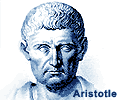Сфабрикованное большинство:
конверсия голосов в места на думских выборах 2003 г.
Голосов Г. В.,
Доцент
DOI: 10.17976/jpps/2005.01.09
Голосов Г. В. Сфабрикованное большинство: конверсия голосов в места на думских выборах 2003 г.. – Полис. Политические исследования. 2005. № 1. С. 108-119. https://doi.org/10.17976/jpps/2005.01.09
Политический успех "Единой России" на думских выборах 2003 г. был достигнут не столько за счет поддержки избирателей, которые отдали ее списку всего 37,6% голосов, сколько в результате конверсии голосов в места, позволившей создать в Думе фракцию подавляющего большинства. В статье выделяется ряд институциональных и политических механизмов, обусловивших такой итог: высокий уровень общесистемной фрагментации в сочетании с голосованием против всех в пропорциональной части избирательной системы; отсутствие территориальных баз поддержки у оппозиционных партий в одномандатных округах; а также латентные коалиционные стратегии, послужившие стимулом для вступления многих одномандатников во фракцию "Единой России".
Список литературы
Cox K.E., Schoppa L.J. 2002. Interaction Effects in Mixed-Member Electoral Systems: Theory and Evidence from Germany, Japan, and Italy. — Comparative Political Studies, vol. 35.
Duverger M. 1986. Duverger's Law: Forty Years Later. — Grofman B., Lijphart A. (eds.) Electoral Laws and Their Political Consequences. N.Y.
Ersson S., Janda K., Lane J.-E. 1985. Ecology of Party Strength in Western Europe: A Regional Analysis. — Comparative Political Studies, vol. 18.
Golosov G.V. 2003. Electoral Systems and Party Formation in Russia: A Cross-Regional Analysis. — Comparative Political Studies, vol. 36.
Golosov G.V. 2004. Political Parties in the Regions of Russia: Democracy Unclaimed. Boulder (CO), L.
Golosov G.V., Ponarin E. 1999. Regional Bases of Party Politics: A Measure and Its Implications for the Study of Party System Consolidation in New Democracies. Robert Schuman Center for Advanced Studies Working Paper 99/25. Badia Fiesolana.
Golosov G.V., Yargomskaya N. 1999. The Impact of Russia’s Electoral System on the Competitive Strategies of Political Actors in the Duma Elections. — Gel’man V., Golosov G.V. (eds.) Elections in Russia, 1993 — 1996: Analyses, Documents and Data. Berlin.
Herron E.S., Nishikawa M. 2001. Contamination Effects and the Number of Parties in MixedSuperposition Electoral Systems. — Electoral Studies, vol. 20.
Laakso M., Taagepera R. 1979. Effective Number of Parties: A Measure with Application to West Europe. — Comparative Political Studies, vol. 12.
Lijphart A. 1986. Degrees of Proportionality of Proportional Representation Formulas. — Grofman B., Lijphart A. (eds.) Electoral Laws and Their Political Consequences. N.Y.
Lijphart A. 1994. Electoral Systems and Party Systems: A Study of Twenty-Seven Democracies, 1945 — 1990. Oxford.
Moser R.G. 2001. Unexpected Outcomes: Electoral Systems, Political Parties, and Representation in Russia. Pittsburgh.
Ordeshook P.C., Shvetsova O.V. 1994. Ethnic Heterogeneity, District Magnitude, and the Number of Parties. — American Journal of Political Science, vol. 38.
Oversloot H., Holsteyn J. van., Berg G.P. van den. 2002. Against All: Exploring the Vote “Against All” in the Russian Federation’s Electoral System. — Journal of Communist Studies and Transition Politics, vol. 18.
Rae D.W. 1967. The Political Consequences of Electoral Laws. New Haven.
Reif K., Schmitt H. 1980. Nine Second-Order National Elections: A Conceptual Framework for the Analysis of European Election Results. — European Journal of Political Research, vol. 8.
Remington T.F. 2001. The Russian Parliament: Institutional Evolution in a Transitional Regime. New Haven.
Rose R. (ed.) 2000. International Encyclopedia of Elections. Washington, DC.
Rose R., Urwin D. 1975. Regional Differentiation and Political Unity in Western Nations. Sage Professional Paper in Contemporary Political Sociology. L., Beverly Hills.
Shugart M.S., Wattenberg M.P. (eds.) 2001. Mixed-Member Electoral Systems: The Best of Both Worlds? Oxford.
Taagepera R., Shugart M.S. 1989. Seats and Votes: The Effects and Determinants of Electoral Systems. New Haven.
Weaver L.H. 1984. Semi-Proportional and Proportional Representation Systems in the United States. — Lijphart A., Grofman B. (eds.) Choosing an Electoral System: Issues and Alternatives. N.Y.
Возможно, Вас заинтересуют:
Дурдин Д. М.,
“Образ” политического лидера и возможности его изменения. – Полис. Политические исследования. 2000. №2
Глубоцкий А. Ю., Кынев А. В.,
Партийная составляющая законодательных собраний российских регионов. – Полис. Политические исследования. 2003. №6
Толпыго А. К.,
Красные на Украине. – Полис. Политические исследования. 1999. №4
Гаман-Голутвина О. В.,
Региональные элиты России: персональный состав и тенденции эволюции (I). – Полис. Политические исследования. 2004. №2
Охрименко В. С.,
Президентские выборы в Беларуси: взгляд из 1997 года . – Полис. Политические исследования. 1997. №6
Комментарии к этой странице:





.jpg)






 версия для печати
версия для печати
.jpg)
.jpg)
Нет комментариев
Вы можете быть первым, кто оставит комментарий